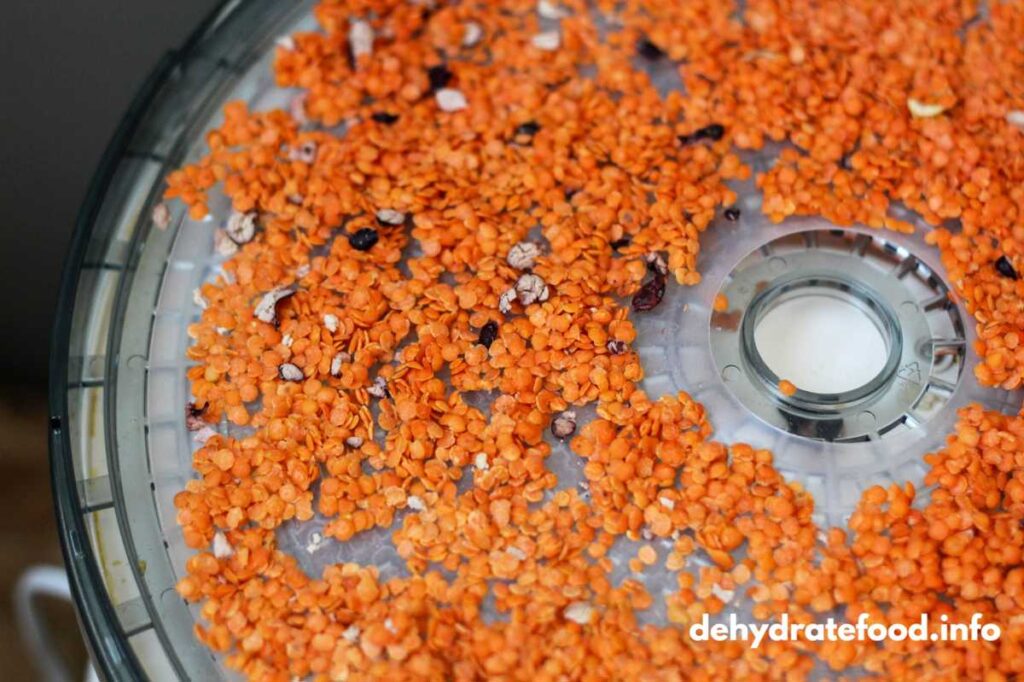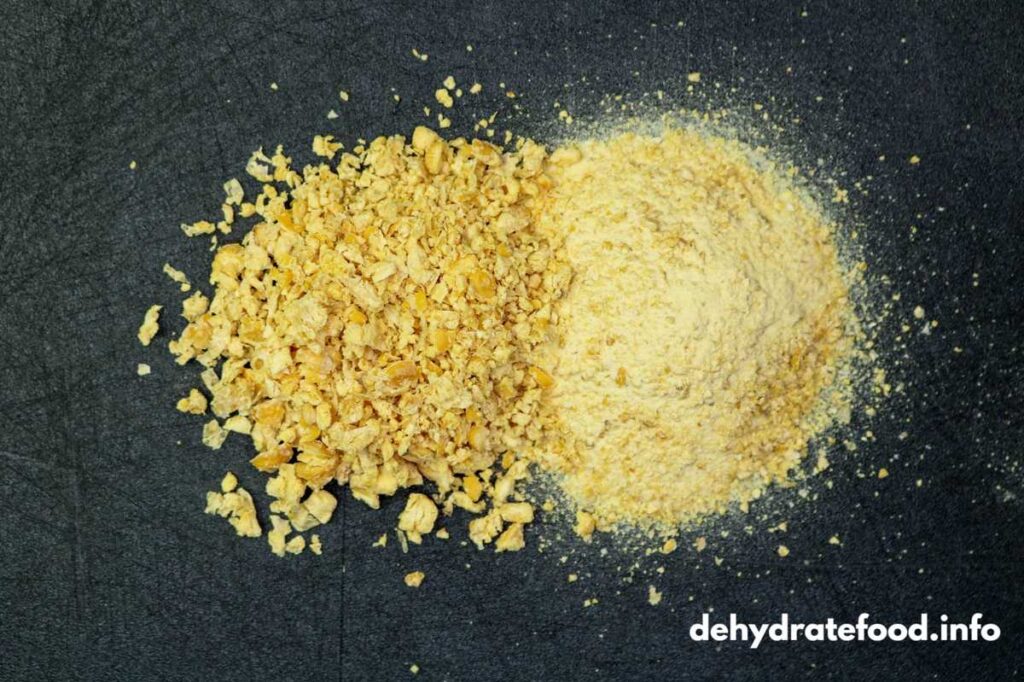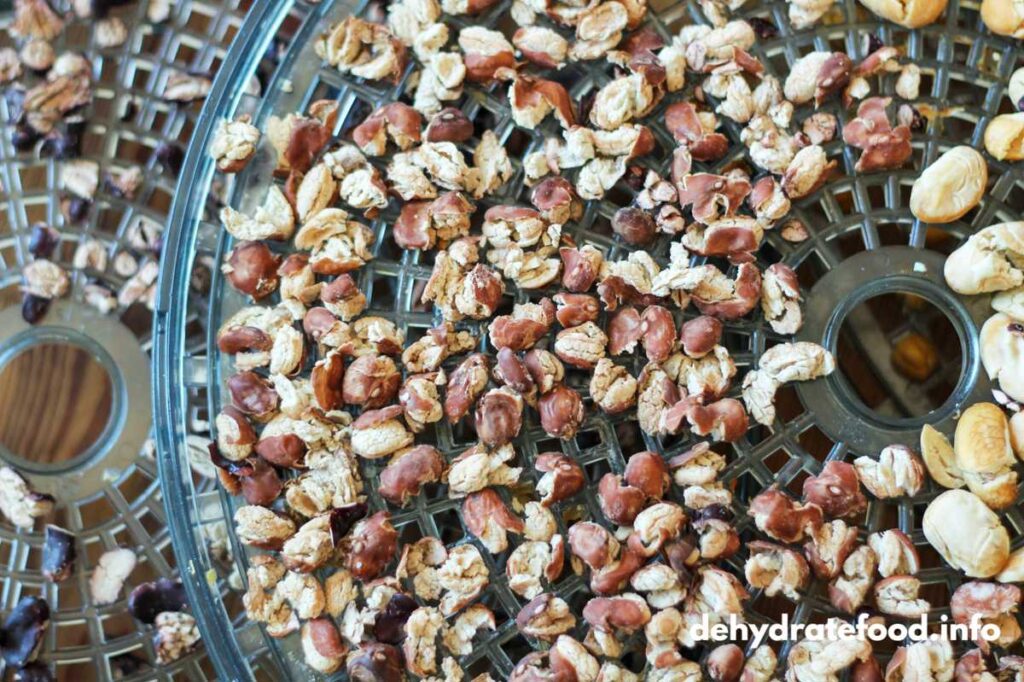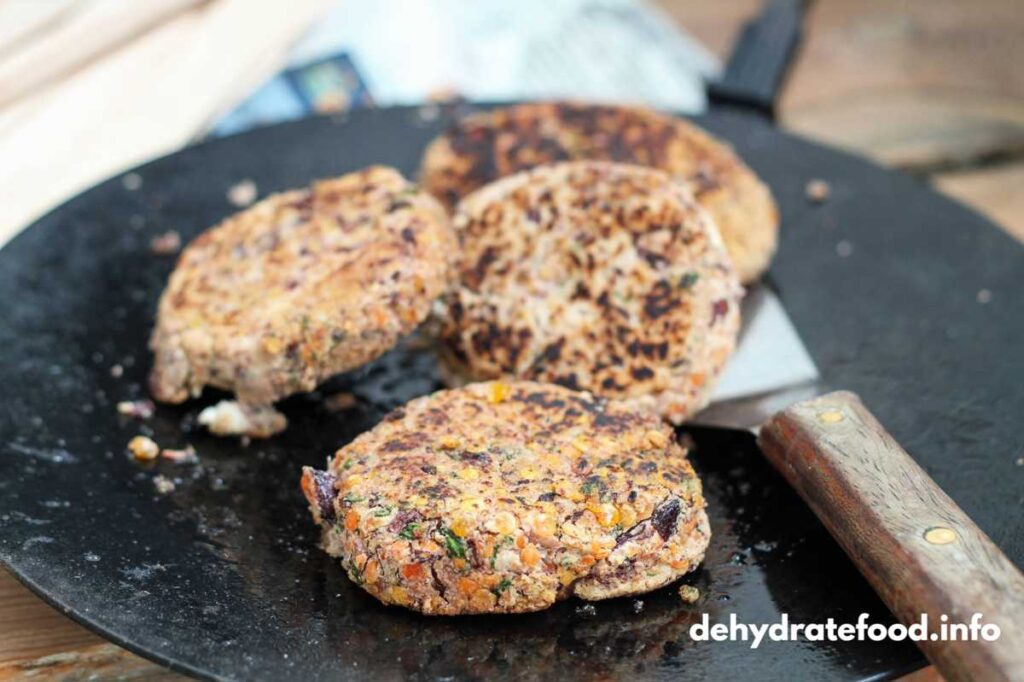HOW TO DEHYDRATE LEGUMES
| Cut | Whole or chopped |
| Pre-treat with heat | Must be cooked |
| Temperature | 52°C (125°F) |
| Time: whole cooked beans | Food dehydrator: 10 hours Convection oven: 14 hours |
| Time: chopped cooked beans | Food dehydrator: 8 hours Convection oven: 12 hours |

Beans and lentils are cheap, climate-smart and can be used for stews and soups. I like to have them as burgers that I fry in oil. Cooked dried beans/lentils only need to be soaked and heated, saving fuel when hiking. You can also eat beans and lentils cold in salads.
There are different ways to acquire good flavours from beans and lentils. Add garlic and other spices to the water if you boil them yourself. If you buy ready-cooked beans, you can marinate them before drying. Another option is to semi-dry the beans, put them in a marinade, and then dry them again. Then, they get a lot of flavour.

The detailed description below is from
The Illustrated Handbook — Kindle Book with 300 color images
⬇️ ⬇️ ⬇️
Dehydrate legumes: Beans and Chickpeas
By drying beans or chickpeas, you can have a salad with a lovely texture whenever and wherever you like. Cooking dried beans and chickpeas from scratch often takes too long and uses a lot of fuel if you cook them in a camping kitchen.
If you want a lot of chewing resistance in the beans, dry them at 40°C (104°F) and soak them in cold water for a couple of hours. Crushed or ground beans are perfect for bean patties or as a thickener in soups.
PRE-TREAT
Dry beans and chickpeas must be soaked and cooked before dehydrating.
CUT
Rinse and chop the beans to shorten drying and soaking time. If you dry them at 52°C (125°F) or more, they will crack during drying, so you don’t need to spend time splitting them.
TEMPERATURE/TIME
Dry the beans at 40°C (104°F) to prevent them from cracking. Dehydrate until they crumble. Use 52°C (125°F) or more if you want them to crack. Whole, cooked beans
Food dehydrator: 10 hours
Convection oven: 14 hours
Before and after dehydration: Chickpeas







